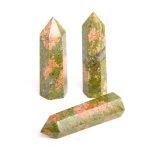Specularite Hematite in Nature
Specularite, a variety of hematite, is a fascinating and versatile mineral that has captivated scientists and industry professionals alike. Characterized by its lustrous, metallic sheen, this iron oxide mineral is often found in metamorphic and hydrothermal environments. It is a common constituent of iron-rich rocks and can exhibit a wide range of colors, from silvery-gray to deep red.

Chemical Properties and Composition
Specularite is composed primarily of iron (Fe) and oxygen (O), with the chemical formula Fe2O3. It has a rhombohedral crystal structure, giving it its distinctive hexagonal shape. The mineral is relatively hard, with a Mohs hardness of 6.5, and has a high specific gravity of 4.9-5.3.
Applications of Specularite Hematite
Specularite hematite has a diverse range of applications, spanning various industries:
Iron Ore
The most significant use of specularite hematite is as an iron ore. It is a major source of iron for the production of steel, accounting for approximately 98% of the world’s iron ore reserves. The mineral is mined and processed to extract the iron content, which is then used to manufacture a wide range of products, including vehicles, buildings, and appliances.
Pigments and Coatings
Specularite hematite has been used as a pigment and coating for centuries. Its fine-grained powder form, known as red ochre, has been employed in traditional paints, ceramics, and pottery. The mineral imparts a reddish-brown color to these materials and can also be used to create metallic effects in decorative coatings.
Electronic and Magnetic Materials
Specularite hematite is gaining attention in the field of electronics and magnetics. Its unique properties make it suitable for use in thin film coatings, sensors, and magnetic recording devices. The mineral exhibits high electrical conductivity, low thermal expansion, and good magnetic properties, making it a potential candidate for advanced technological applications.
Refractory Materials
Specularite hematite is used in the manufacturing of refractory materials, which are designed to withstand extreme heat and corrosive conditions. The mineral’s high melting point and chemical stability make it an ideal component for firebricks, crucibles, and other high-temperature applications.
Future Applications and Innovations
The potential applications of specularite hematite continue to expand as researchers and industries explore its versatile properties. Some emerging areas of interest include:
Energy Storage
Specularite hematite is a promising candidate for energy storage devices, such as lithium-ion batteries. Its high theoretical capacity and excellent electrochemical stability make it an attractive material for electrodes in next-generation energy storage systems.
Environmental Remediation
Specularite hematite has been shown to have photocatalytic properties, enabling it to degrade organic pollutants and remove heavy metals from wastewater. This makes it a potential solution for environmental remediation and water purification.
Biomaterials
Specularite hematite nanoparticles have been investigated for their potential use in biomaterials. They exhibit antibacterial properties and can promote cell proliferation, making them suitable for applications in tissue engineering and drug delivery.
Novel Applications
Going beyond these established uses, the concept of “hemengineering” has emerged as a new field dedicated to exploring the unique properties of specularite hematite. This approach aims to tailor the mineral’s properties for specific applications, paving the way for novel technologies and advancements in various sectors.
Key Data and Statistics
- The global iron ore market is estimated to reach $450 billion by 2026, with specularite hematite accounting for the majority of production.
- The world’s largest producer of specularite hematite is Australia, which accounts for approximately 30% of global supply.
- In the United States, the state of Minnesota is a major producer of specularite hematite, with the Mesabi Range being one of the largest iron ore deposits in the world.
- The use of specularite hematite in electronic and magnetic materials is projected to grow significantly in the coming years, driven by advancements in technology.
- Research into the environmental remediation capabilities of specularite hematite has received significant funding, with promising results in the degradation of various pollutants.
Tables
Table 1: Chemical Composition of Specularite Hematite
| Component | Percentage (%) |
|---|---|
| Iron (Fe) | 69.94 |
| Oxygen (O) | 30.06 |
Table 2: Properties of Specularite Hematite
| Property | Value |
|---|---|
| Color | Silvery-gray to deep red |
| Crystal Structure | Rhombohedral |
| Mohs Hardness | 6.5 |
| Specific Gravity | 4.9-5.3 |
| Melting Point | 1565 °C |
Table 3: Applications of Specularite Hematite
| Industry | Application |
|---|---|
| Iron and Steel | Iron ore |
| Paint and Coatings | Pigments and coatings |
| Electronics and Magnetics | Thin film coatings, sensors, magnetic recording |
| Refractory Materials | Firebricks, crucibles |
| Energy Storage | Lithium-ion batteries |
| Environmental Remediation | Degradation of pollutants, heavy metal removal |
Table 4: Key Data and Statistics
| Statistic | Value |
|---|---|
| Global Iron Ore Market by 2026 | $450 billion |
| Largest Specularite Hematite Producer | Australia |
| Major Specularite Hematite Deposit in the US | Mesabi Range, Minnesota |
Tips and Tricks
- When handling specularite hematite, wear protective gear to avoid inhalation of dust.
- To maintain the mineral’s luster, avoid exposure to moisture and strong acids.
- For experimental purposes, small samples of specularite hematite can be purchased from geological supply companies.
Conclusion
Specularite hematite is a remarkable material with a wide range of applications and potential for future innovations. Its unique properties make it valuable in industries such as iron and steel, pigments, electronics, and energy storage. As research continues to unlock the full potential of specularite hematite, we can expect to see its use expand even further, contributing to advancements in various technologies and industries.




























